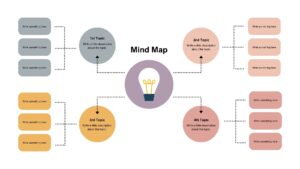When applied strategically, prompt engineering enables institutions to create content that feels authentic, builds authority, and aligns with the rigorous standards of higher education audiences.

In an era where AI-generated content floods search engines and social platforms, education marketers face a new challenge: how to ensure their messaging stands out while remaining compliant with Google’s E-E-A-T framework (Experience, Expertise, Authoritativeness, Trustworthiness).
For universities and institutions, credibility is non-negotiable—students and parents depend on reliable information to make life-changing decisions. While education marketing companies and agencies are quick to adopt generative AI, the difference between generic AI text and truly impactful content lies in the discipline of prompt engineering.
When applied strategically, prompt engineering enables institutions to create content that feels authentic, builds authority, and aligns with the rigorous standards of higher education audiences.
1. Turning Faculty Expertise into AI Prompts — Beyond Ghostwriting
The foundation of higher education marketing is credibility. Prospective students want to hear from professors, researchers, and practitioners—not faceless corporate messaging. Yet, many education marketing companies struggle to translate faculty insights into marketable content. This is where prompt engineering becomes transformative.

By designing prompts that embed faculty perspectives, marketers can generate AI outputs that carry authentic expertise.
For example,
Instead of prompting AI with “Write about MBA trends in India,” an institution can refine the instruction: “Summarize insights from Professor X’s recent research on the Indian MBA landscape, highlighting job market outcomes and referencing global ranking data.”
This approach ensures that the AI text doesn’t just mimic generic knowledge but reflects real-world authority. It also aligns perfectly with E-E-A-T by emphasizing the “Experience” and “Expertise” elements.
A recent QS survey (2024) revealed that 67% of students trust faculty-authored content more than official brochures. By using AI to extend—not replace—faculty voices, education marketing agencies can elevate blogs, whitepapers, and program brochures into high-authority assets.
In practice, this helps higher education digital marketing agencies create content pipelines where AI serves as an editor and synthesizer, not a ghostwriter. The result is scalable, authentic, and SEO-friendly content that reassures audiences while ranking higher in search.
2. Persona-Layered Prompts for Multi-Stakeholder Content
Marketing for education is uniquely complex because institutions engage multiple stakeholders simultaneously: students, parents, alumni, policymakers, and recruiters.

Traditional higher education marketing strategies often fail when they use a one-size-fits-all narrative. Prompt engineering allows marketers to “layer personas” into content creation, ensuring each piece speaks to its intended audience.
For example, a university marketing strategy might require three distinct blog posts around the same theme:
- For students: A conversational guide on scholarships and career outcomes.
- For parents: A fact-driven piece emphasizing safety, ROI, and accreditation.
- For recruiters: A professional article on the institution’s industry partnerships.
By explicitly instructing AI through layered prompts “Write from a parent’s perspective concerned about ROI”—marketers can generate content that resonates at a deeper level. This is especially important in admissions, where decision-making is often collective.
Data backs this up: According to Salesforce’s 2025 Higher Ed Report, 72% of students consult their parents before finalizing admissions, while 54% of parents cite employability as the top criterion. Content that addresses each stakeholder directly builds trust and accelerates conversions.
For education marketing agencies, persona-layered prompts also streamline campaigns. Instead of commissioning three separate writers, AI can produce differentiated drafts quickly, which human editors can then refine.
3. Embedding Citations and Source Fidelity at the Prompt Level
One of the main pitfalls of AI-generated content is “hallucination”—fabricated data or inaccurate claims. In the context of marketing to education, this is a deal-breaker.

Students and parents expect factual accuracy, while Google’s algorithms penalize thin or misleading content. Prompt engineering offers a safeguard by embedding citation logic directly into content generation.
Instead of vague prompts like “Write about India’s NEP 2020 reforms,” a smarter approach is: “Summarize NEP 2020 reforms with references from Ministry of Education reports, UGC guidelines, and two global think-tank studies published after 2022.” This ensures AI retrieves and formats content in a citation-rich manner, aligned with E-E-A-T.
Consider the success of education marketing agencies that integrate data-backed content. A study by Content Marketing Institute (2024) found that fact-anchored blogs enjoy 34% longer on-page engagement compared to generic text. In higher education, where credibility drives enrollment, this difference can directly impact ROI.
Moreover, embedding source fidelity enhances trustworthiness when applied across channels—whether in higher education digital marketing agency campaigns, university brochures, or alumni newsletters. Even admissions FAQs can benefit when AI outputs are guided to cite policy updates or accreditation records.
4. E-E-A-T Through Narrative Prompt Chains
Generic AI text often feels flat because it relies on single-prompt generation. Prompt chaining—breaking down content creation into sequential, purpose-driven prompts produces layered narratives that align better with E-E-A-T.

For higher education marketing agencies, this means moving from transactional content to thought-leadership quality.
Here’s how it works in practice:
- Prompt 1: Generate an outline on “Impact of NEP 2020 on Tier-II universities.”
- Prompt 2: Expand one section with student testimonials and local case studies.
- Prompt 3: Insert expert commentary from faculty research or accreditation bodies.
- Prompt 4: Refine into SEO-compliant blog with meta descriptions and keywords.
The outcome is content that demonstrates experience, incorporates expertise, builds authoritativeness, and establishes trustworthiness—hallmarks of E-E-A-T.
A higher education marketing strategy implemented by a leading UK university used AI narrative chaining to create long-form reports on employability trends. These reports, once published, improved organic search traffic by 42% in under six months because they outperformed generic blogs in depth and authority.
For education marketing companies, narrative chains can also reduce the risk of errors since each stage adds a human editorial checkpoint. This layered method mirrors how professional journalists and academic writers build credibility, making AI content far more competitive in crowded digital spaces.
5. Ethical Prompt Engineering — Avoiding AI Bias in Education Content
Bias in AI is a growing concern, especially in education marketing strategies where sensitive topics such as admissions, scholarships, and diversity are at play. Unchecked, generic AI can unintentionally reinforce stereotypes or omit marginalized voices, undermining both trustworthiness and inclusivity.

Prompt engineering provides a powerful solution. By explicitly directing AI to audit for fairness, marketers can produce content that reflects institutional values.
For example: “Generate a blog about scholarships in India, ensuring equal representation of STEM and humanities, gender inclusivity, and accessibility for first-generation students.”
This ethical layer is not just compliance—it’s a differentiator. A 2024 Deloitte study revealed that 71% of Gen Z students consider inclusivity a deciding factor when engaging with universities online. Institutions that fail to embed inclusivity risk alienating large student segments.
For higher education digital marketing agencies, ethical prompting also reduces reputational risks. If an institution’s admissions FAQ, powered by AI, omits or misrepresents categories of applicants, the fallout can be severe. By contrast, engineered prompts can proactively flag gaps and balance representation.
Even in education marketing jobs, professionals now require “education needed for marketing” skills that include AI literacy and bias detection. Recruiters increasingly look for candidates who can blend creativity with ethical oversight.
6. Building Prompt IP as a Differentiator for Institutions
As AI adoption accelerates, institutions risk producing commoditized content. The differentiator lies in developing proprietary prompt libraries tailored to higher education marketing strategies.

This Prompt IP (Intellectual Property) can become a strategic asset for universities and agencies.
For example, an education marketing agency might build a repository of tested prompts for admissions FAQs, alumni success stories, and ranking announcements. A university marketing strategy could involve prompts that highlight faculty research while embedding SEO structures. Over time, these libraries create consistency, efficiency, and measurable performance advantages.
Consider how global brands use style guides. Similarly, prompt libraries function as “AI style guides” for higher education marketing agencies, ensuring tone, compliance, and E-E-A-T alignment remain consistent across campaigns.
A case study: A leading Australian university implemented a proprietary prompt bank for program brochures. Within six months, they reported a 35% reduction in content turnaround time and a 28% increase in organic search visibility, since their AI content consistently outperformed generic competitor text.
For marketers, building prompt IP also creates career opportunities. Education marketing jobs now increasingly ask for AI proficiency—prompt design being a sought-after skill that blends creativity with strategic thinking.
Conclusion
The future of higher education marketing will not be defined by how much content institutions can produce, but by how credible, compliant, and student-centric that content is. Prompt engineering offers education marketers a way to harness AI responsibly—transforming it from a volume-driven tool into a precision instrument for building trust, authority, and engagement.
From turning faculty insights into scalable narratives, to layering personas, embedding citations, and ensuring inclusivity, each strategy reinforces E-E-A-T principles that Google and students alike demand.
As higher education marketing agencies and institutions begin to build proprietary prompt libraries, they are not just keeping pace with AI—they are future-proofing their credibility.
In an industry where trust drives enrollment, education marketing strategies anchored in prompt engineering will always outperform generic AI text. For education marketers, the time to invest in this skill is now.



Pingback: Voice Search & AI in Higher Ed SEO: Preparing for the Future
Pingback: AEO for Admissions: What It Is and How It Differs from SEO?
Pingback: Education Marketing Can Overcome AI Content Paradox in SEO